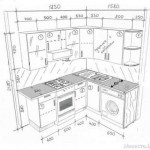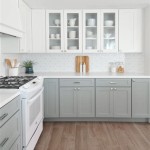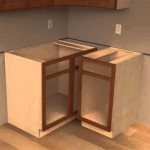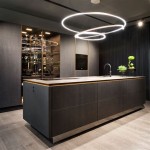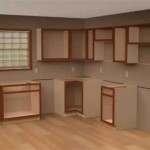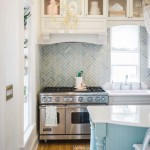Best Primer for MDF Kitchen Cabinets: Achieving a Flawless Finish
Medium-density fiberboard (MDF) is a common material used in kitchen cabinets due to its affordability, consistent surface, and ease of machining. However, MDF's porous nature presents challenges when painting. Without proper preparation, paint can be absorbed unevenly, leading to a rough, unprofessional finish. Selecting the correct primer is crucial for achieving a smooth, durable, and aesthetically pleasing surface on MDF kitchen cabinets. This article explores the key factors to consider when choosing a primer for MDF cabinets and highlights some of the best options available.
MDF is composed of fine wood fibers bonded together with resin under high pressure and heat. This manufacturing process results in a dense, stable material that is less prone to warping or cracking compared to solid wood. However, the fine fibers create a highly absorbent surface that readily soaks up paint. This can lead to several problems, including excessive paint consumption, uneven sheen, and raised grain. A good primer seals the MDF surface, preventing excessive absorption and providing a uniform base for paint adhesion.
Understanding the Importance of Priming MDF
Priming MDF is not merely an optional step; it is an essential part of the finishing process that significantly impacts the final result. The primary function of a primer is to create a barrier between the porous MDF and the paint. This barrier prevents the MDF from wicking away moisture from the paint, which can cause the paint to dry too quickly and unevenly. Without a proper primer, the paint may sink into the MDF, resulting in a dull, flat appearance and requiring multiple coats to achieve adequate coverage. Furthermore, a primer enhances paint adhesion, ensuring that the paint bonds firmly to the MDF surface. This is particularly important in high-use areas like kitchen cabinets, where the finish is subject to wear and tear.
Another benefit of using a primer is its ability to block tannins and other extractives present in the wood fibers from bleeding through the paint. This is especially important when painting MDF a light color, as these extractives can discolor the paint over time, resulting in staining or yellowing. A good primer will effectively seal these extractives, preventing them from migrating to the surface and compromising the finish. Finally, primers can also help to smooth out minor imperfections in the MDF surface, such as scratches or dents. By filling in these imperfections, the primer creates a more uniform base for the paint, resulting in a smoother and more professional-looking finish.
Key Considerations When Choosing a Primer
Selecting the right primer for MDF kitchen cabinets involves several factors. These include the type of primer, its compatibility with the topcoat paint, the method of application, and the specific characteristics of the MDF being used. It is crucial to carefully consider each of these factors to ensure that the chosen primer will provide the desired results.
Type of Primer: There are several types of primers available, each with its own advantages and disadvantages. Some common options include latex primers, oil-based primers, shellac-based primers, and specialty MDF primers. Latex primers are water-based and offer good adhesion, flexibility, and low odor. They are also easy to clean up with soap and water. Oil-based primers provide excellent sealing properties and are particularly effective at blocking tannins and other extractives. However, they have a strong odor, require mineral spirits for cleanup, and take longer to dry. Shellac-based primers offer exceptional sealing and stain-blocking capabilities. They dry quickly and provide a hard, durable finish. However, they are typically more expensive than other types of primers and require denatured alcohol for cleanup. Specialty MDF primers are formulated specifically for use on MDF and offer excellent adhesion, sealing, and sanding properties.
Compatibility with Topcoat: It is essential to ensure that the primer is compatible with the topcoat paint. Using incompatible products can lead to adhesion problems, peeling, and other finish defects. Generally, it is best to use a primer and paint from the same manufacturer or product line to ensure compatibility. If using different brands, carefully review the product descriptions and technical data sheets to verify that the products are compatible. For example, if using an oil-based paint, it is generally best to use an oil-based or shellac-based primer. Likewise, if using a latex paint, a latex primer is typically the best choice.
Method of Application: The method of application can also influence the choice of primer. Primers can be applied using a brush, roller, or sprayer. Brushing is suitable for small areas or intricate details, while rolling is more efficient for larger, flat surfaces. Spraying provides the smoothest and most uniform finish, but it requires specialized equipment and proper ventilation. When choosing a primer, consider its viscosity and drying time, as these factors can affect how easily it can be applied using the desired method. For example, a primer that is too thick may be difficult to apply smoothly with a brush or roller, while a primer that dries too quickly may leave brush marks or roller stipple.
Characteristics of MDF: The specific characteristics of the MDF being used can also influence the choice of primer. For example, if the MDF is particularly porous or has a rough surface, a high-build primer may be necessary to fill in the pores and create a smooth base for the paint. If the MDF is prone to swelling when exposed to moisture, a moisture-resistant primer may be necessary to prevent warping or damage. Additionally, if the MDF contains a high level of extractives, a stain-blocking primer may be required to prevent discoloration of the paint.
Top Primer Choices for MDF Kitchen Cabinets
Several primers are specifically formulated for use on MDF and offer excellent performance in kitchen cabinet applications. Some of the top choices include:
BIN Shellac-Based Primer: BIN is a popular shellac-based primer known for its exceptional sealing and stain-blocking properties. It dries quickly, adheres well to MDF, and provides a hard, durable finish. BIN is particularly effective at blocking tannins and other extractives, making it an excellent choice for painting MDF white or other light colors. However, it has a strong odor and requires denatured alcohol for cleanup.
Kilz Original Interior/Exterior Primer: Kilz Original is an oil-based primer that offers excellent sealing and stain-blocking capabilities. It is particularly effective at preventing bleed-through from knots and stains. It is known for its strong adhesion and ability to create a smooth, uniform surface for painting. While Kilz Original is versatile and suitable for both interior and exterior applications, it has a longer drying time and requires mineral spirits for cleanup.
Zinsser 1-2-3 Primer: Zinsser 1-2-3 is a water-based acrylic primer that offers good adhesion, sealing, and stain-blocking properties. It is suitable for use on a variety of surfaces, including MDF, and provides a flexible, durable finish. Zinsser 1-2-3 is easy to apply, has low odor, and cleans up with soap and water.
Sherwin-Williams PrepRite ProBlock Primer: Sherwin-Williams PrepRite ProBlock is a high-quality latex primer designed to provide excellent adhesion and sealing on various interior surfaces, including MDF. It offers good hide and helps create a smooth, uniform surface for topcoats. PrepRite ProBlock is easy to apply and sands well, making it a reliable choice for preparing MDF kitchen cabinets for painting.
Benjamin Moore Fresh Start High-Hiding All Purpose Primer: Benjamin Moore Fresh Start is a premium acrylic latex primer that delivers exceptional adhesion and hiding power on MDF. It effectively seals porous surfaces, creating a smooth and uniform base for paint. Known for its excellent flow and leveling properties, this primer ensures a professional-looking finish with minimal effort. It is also low VOC, making it an environmentally conscious choice.
Ultimately, the best primer for MDF kitchen cabinets will depend on the specific needs and preferences of the user. It is crucial to carefully consider the factors discussed above and choose a primer that is compatible with the topcoat paint, easy to apply, and provides the desired level of sealing, adhesion, and stain-blocking.
Proper preparation of the MDF surface is crucial before applying the primer. This includes sanding the MDF to remove any rough edges or imperfections, cleaning the surface to remove dust and debris, and filling any holes or dents with wood filler. Sanding should be done with fine-grit sandpaper (220-grit or higher) to avoid scratching the MDF surface. After sanding, use a tack cloth or vacuum to remove all traces of dust. If necessary, apply wood filler to any holes or dents and allow it to dry completely before sanding smooth. Once the MDF surface is properly prepared, the primer can be applied according to the manufacturer's instructions.
Applying the primer in thin, even coats is essential for achieving a smooth and uniform finish. Avoid applying the primer too thickly, as this can lead to runs, drips, and uneven drying. If necessary, apply multiple thin coats of primer, allowing each coat to dry completely before applying the next. Lightly sanding the primer between coats can help to smooth out any imperfections and improve adhesion. Always follow the manufacturer's recommended drying times and sanding guidelines.

Painting Mdf The Ultimate Guide

The Best Primer For Cabinets Erin Zubot Design
What Is The Best Primer To Use When Painting Kitchen Cabinets Quora

Paint Primer 101 Latex Vs Sac Oil Based A Piece Of Rainbow

Best Paint For Kitchen Cabinets 24 Brands Blind Tested 2024

Can You Paint Mdf Cabinets Pa Kitchen

Painting Mdf Kitchen Cabinets Theril Cabinet Redo Poofy Cheeks

Mdf Kitchen Cabinets All You Need To Know

How To Paint Mdf Kitchen Doors At Home New Replacement

Best Paint For Kitchen Cabinets Solved Bob Vila
Related Posts

